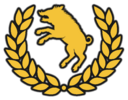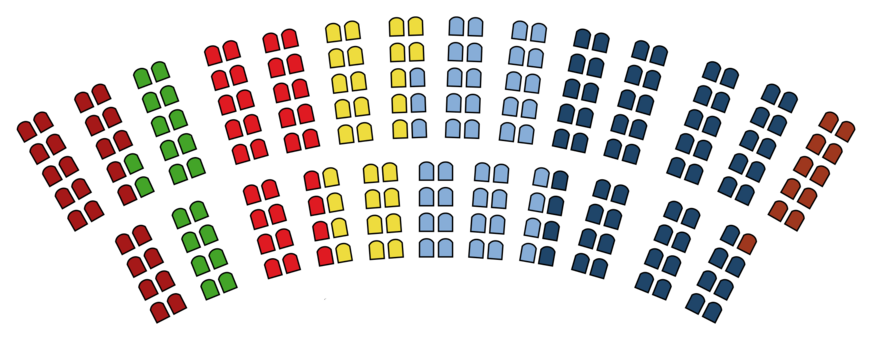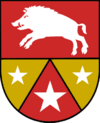Folkekammer
Jump to navigation
Jump to search
The Peoples Chamber Folkekammeret | |
|---|---|
| Established | 1 September 1878 |
| Leadership | |
Speaker of the Folkekammer | Knud-Erik Holgersen, Littish Democrats |
Prime Minister | Albert Simonsen, Littish Democrats |
Leader of the Opposition | Viktoria Wolff, Labour Party |
| Structure | |
| Seats | 230 |
 | |
Political groups | Government (112)
Support (26)
Opposition (92)
|
| Elections | |
| Closed list proportional representation with a 3% election threshold | |
Last election | 18 Nov 2022 |
Next election | Before 18 Nov 2026 |
| Meeting place | |
 | |
| Folkekammeret Tinghuset, Kaslund, Littland | |
 |
|---|
| This article is part of a series on the politics and government of Littland |
|
|
History
2022 Constitution
Elections
All 230 seats in the Folkekammer are elected every 4 years in a general election. All citizens aged 18 on the day of the election can vote as well as stand for election. The threshold for parties to enter the Folkekammer is 3% of all votes cast. The seats in the Folkekammer is distributed along proportional representation of the total valid vote count. The last election was on 18 November 2022 and so the next election will have to be before 18 November 2026 as per the constitution. The Prime Minister can call for elections at any point and is often cited as an advantage to the ruling party.
Organization
Committees
| Committee | Chair | Chair's party |
|---|---|---|
| Housing and Development | Henrik Kollerup | Littish Democrats |
| Culture and Education | Olivia Stenmose | Labour Party |
| Justice | Rasmus Mikkelsen | New Center Party |
| Business and Trade | Per Skaarup | Labour Party |
| Finance and Taxation | Tina Larsen | National Liberals |
| Foreign Affairs and Defence | Tobias Ravn | Littish Democrats |
| Health | Karina Lund | National Liberals |
| Immigration and Equality | Jens Olsen | Labour Party |
| Energy and Innovation | Morten Larsen | Littish Democrats |
| Food and Enviornment | Simon Rasmussen | National Liberals |
Composition
Current composition
| Party | Main ideology | Political position | Leader | 2022 Election | Party description | |||||
|---|---|---|---|---|---|---|---|---|---|---|
| Folkekammer seats |
Election vote share | |||||||||
| LD | 
|
Littish Democrats Littiske Demokrater |
National conservatism | Right-wing | 
|
Albert Simonsen | 69 / 230
|
29.50% | A national conservative party, views favorably on liberalism and ensuring stability in Littland | |
| NL | 
|
The National Liberals Nationalliberalisterne |
Liberal conservatism | Centre-right | 
|
Ernst Møller | 43 / 230
|
18.41% | A liberal party, advocates for less state-owned companies, lower taxes and is somewhat socially conservative. | |
| AP | 
|
Labour Party Arbejderpartiet |
Social democracy | Centre-left | 
|
Viktoria Wolff | 32 / 230
|
13.76% | A social democratic party which advocates for better social welfare, minority rights and a continued free market economy. | |
| NC | 
|
New Center Party Nyt Centrum |
Radical centrism | Centre | 
|
Helle Østergaard | 26 / 230
|
12.57% | A centrist party with a social liberal background, favors minority rights and renewable energy. | |
| LF | 
|
Littish People's Party Littisk Folkeparti |
Velaherian Socialism | Far-left | 
|
Bjarne Kristiansen | 26 / 230
|
11.38% | A socialist party that actively advocates for Velaherian Socialism and a larger public sector and workers rights. | |
| GD | 
|
Democratic Greens Grønne Demokrater |
Green politics | Left-wing | 
|
Ebbe Steensen | 20 / 230
|
8.51% | A green party in favor of environmentalism, sustainability and a bigger focus on renewable energy sources. | |
| NP | 
|
National Party of Littland Nationalpartiet |
Nationalism | Far-right | 
|
Joakim Dam | 11 / 230
|
4.85% | A staunchly nationalistic party with a focus on better welfare, economic growth and a return to isolationism. | |
Historical composition
[[File:|center|frameless|420px]]

